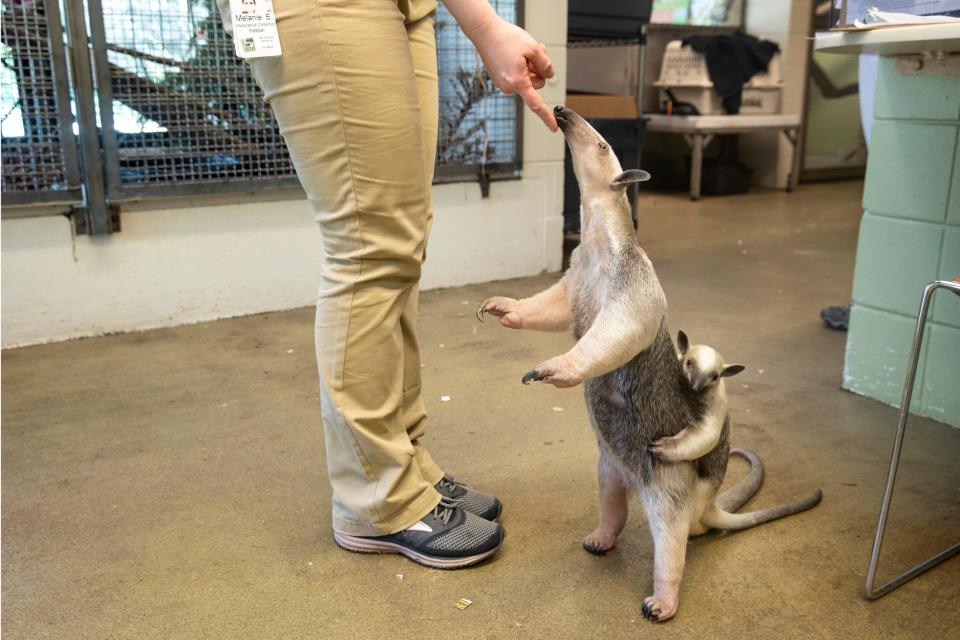A Cincinnati Zoo animal is pregnant! Here's everything we know about the expecting mother
The Cincinnati Zoo & Botanical Garden is expecting a new critter.
Isla the tamandua is pregnant and expecting a pup at the end of December, according to the zoo's Facebook page.
Scientists from the zoo's Center for Conservation and Research of Endangered Wildlife (CREW) confirmed the anteater's pregnancy on social media yesterday.
The zoo's digital engagement and publicity manager, Angela Hatke, said Isla has been pregnant for about two-and-a-half-months. This will be her third pregnancy since her arrival at the zoo in 2016. Isla became a first-time mother in 2018 at the age of five.
What we know about Isla and her pregnancy
Scientists from Cincinnati Zoo's CREW have confirmed that Isla the tamandua is pregnant and expecting a pup at the end of December! Check out this amazing video from her most recent ultrasound! pic.twitter.com/vht0xTRui0
— Cincinnati Zoo (@CincinnatiZoo) October 12, 2022
According to the zoo's website, a tamandua's life span ranges from five to seven years, but Hatke said they have no reason to be concerned about the safety of this pregnancy for the mom or pup.
"Tamandua life expectancy in human care ranges between 7-15 years on average. ... Isla is a very healthy individual overall," Hatke said.
A tamandua's gestation period typically ranges from 130-190 days. During Isla's previous pregnancies, the period lasted around 160 days.
Although an exact date of birth is unknown, Hatke and Isla's care team estimate that the zoo baby will arrive in late December or early January, just in time for the holidays.
Isla's care team will monitor her pregnancy with regular voluntary ultrasounds to check her progress. She will be in the Animal Ambassador Center near the Children’s Zoo entrance for the duration of her pregnancy.
Visitors might see her throughout the day. However, tamanduas are primarily nocturnal animals, so if Isla is taking a nap out of view in her bed, that means she’s doing exactly what she should be.
What are tamanduas?

Also called the lesser anteater, the tamandua uses its long snout to sniff out ant, termite and bee colonies. They can eat up to 9,000 ants in one day, according to a previous report from The Enquirer.
They have long claws for digging into nests and a long, sticky tongue to lick up those insects. The mammal also has a prehensile tail used for gripping branches, which helps it forage on the ground and in trees.
Tamanduas are mostly nocturnal and cannot see very well. So, when you do get to see one, don't expect it to make eye contact with you.
This article originally appeared on Cincinnati Enquirer: Cincinnati Zoo animal expecting baby for holidays. Here's what we know

